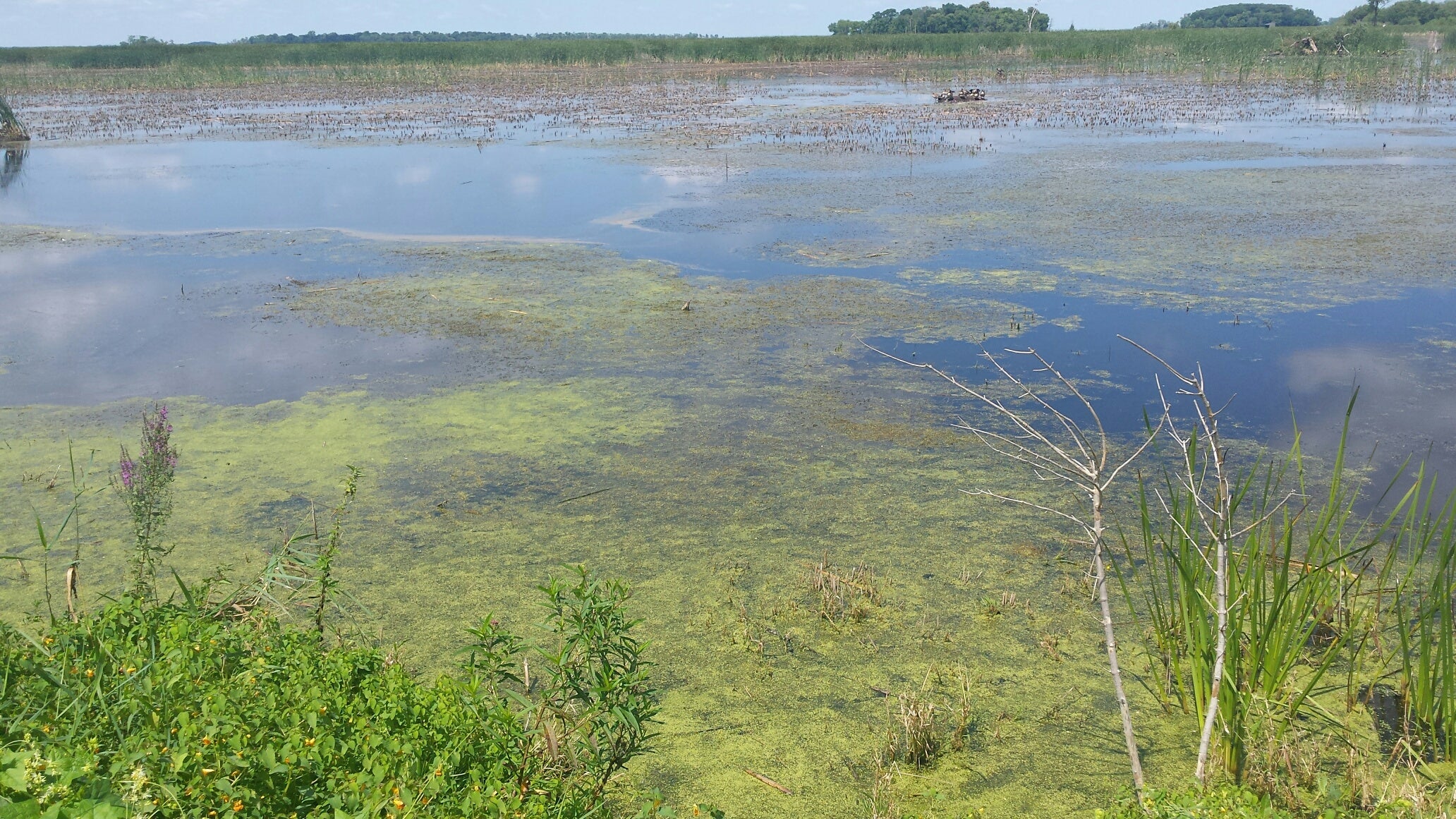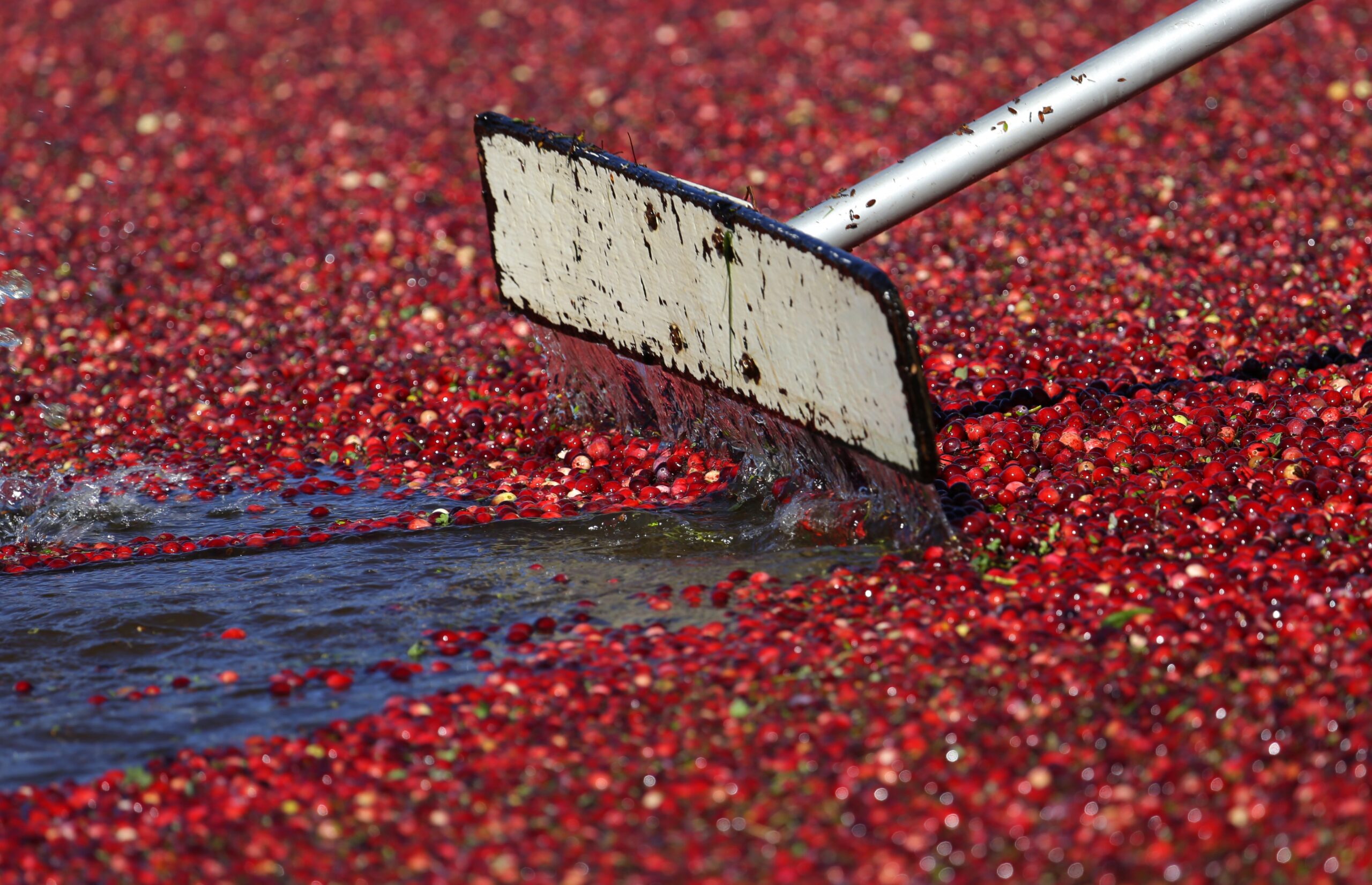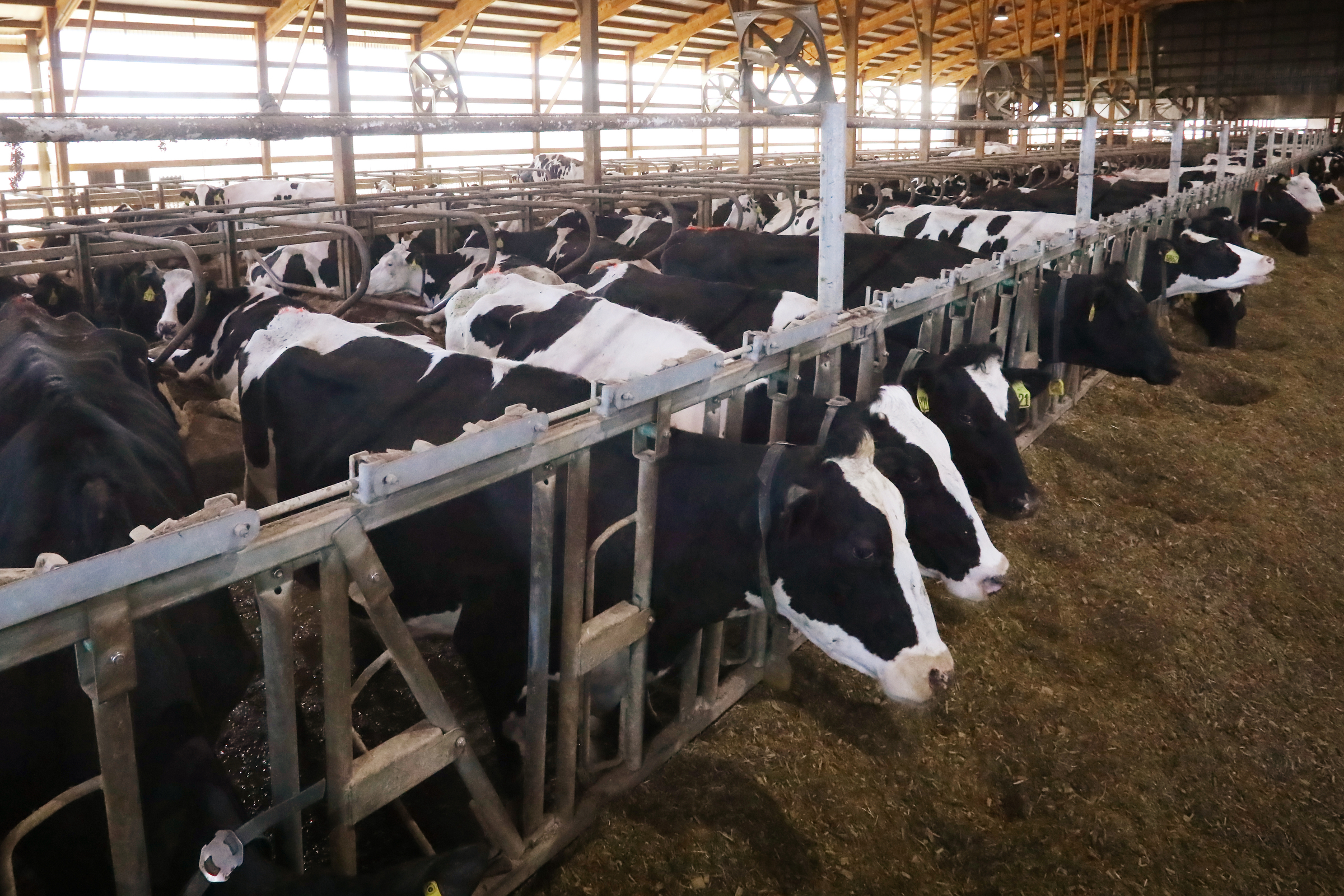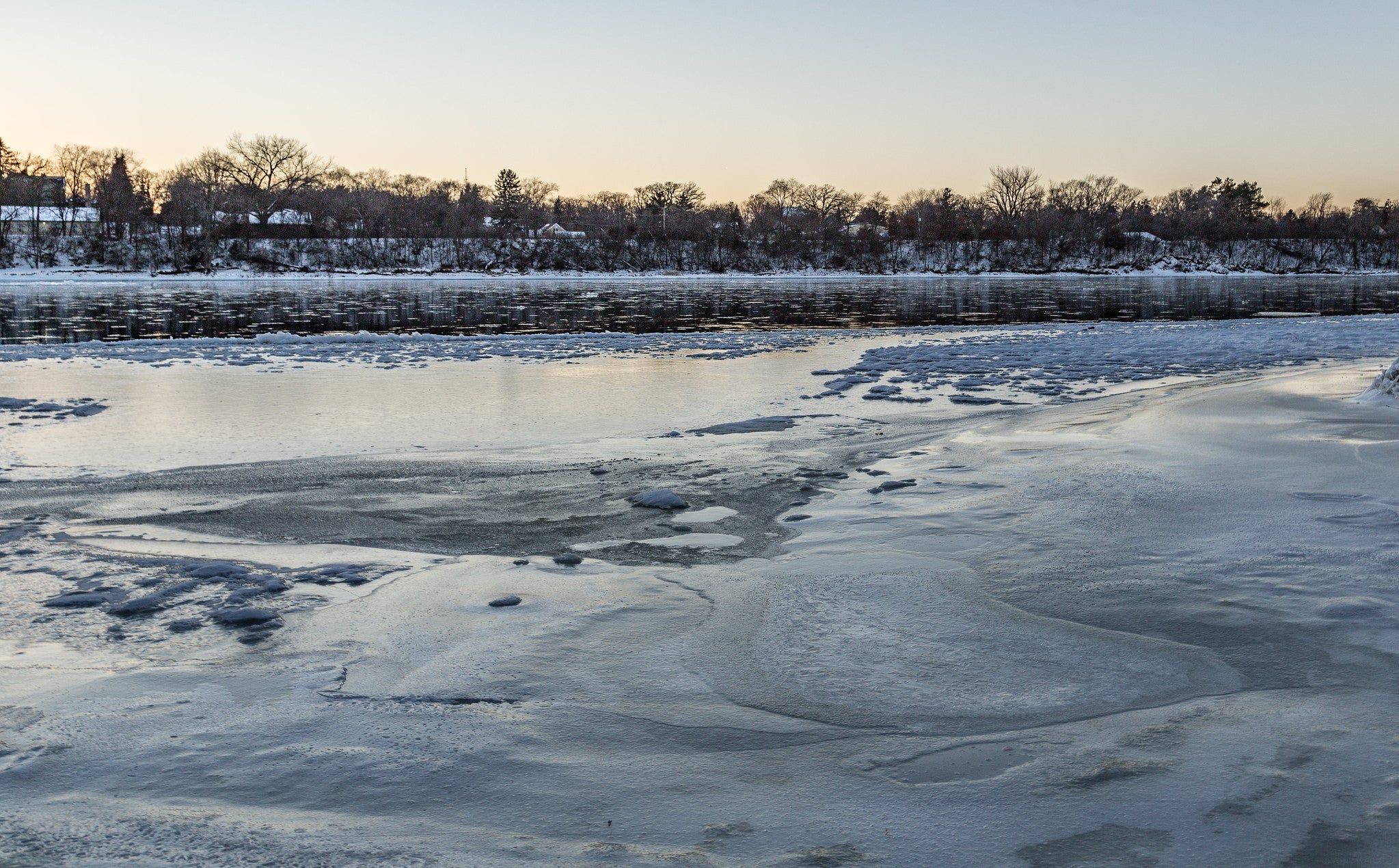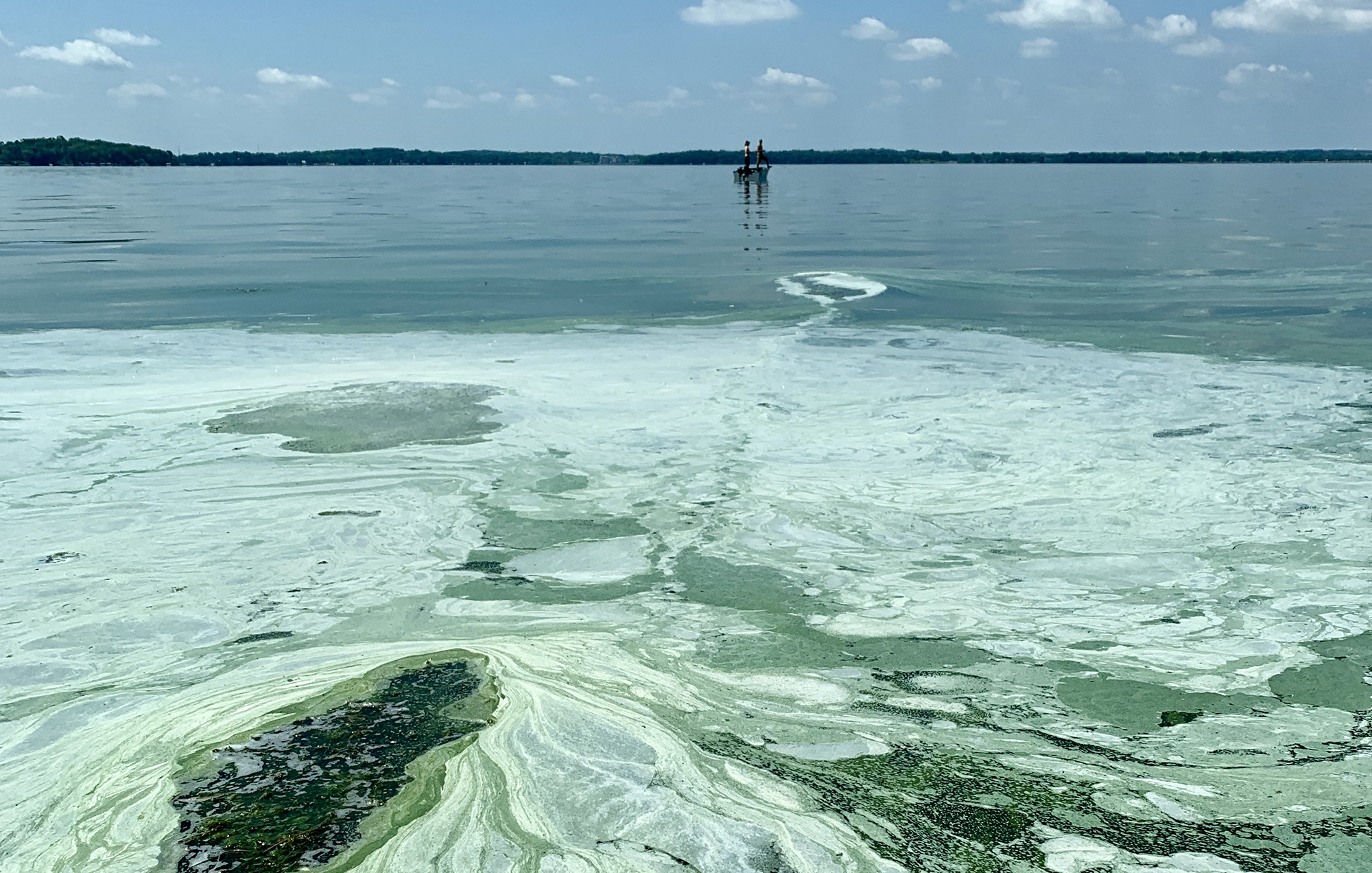From Kewaunee to Menomonie, the Department of Natural Resources is getting an earful again this summer about the phosphorus-fueled algae blooms and weeds in many Wisconsin waterways.
Horicon Marsh, part of the Rock River in central Wisconsin, provides an example of what’s at issue: Like many other waterways in the state, it has thin layers of green algae on its surface. The Rock River’s watershed is one of many in the state struggling with high levels of phosphorus that partly comes from sewage treatment plants and industrial sites.
During a recent trip to the Horicon area, the DNR Board toured a wastewater treatment plant just a few miles away from the marsh, in the village of Lomira.
Stay informed on the latest news
Sign up for WPR’s email newsletter.
DNR Wastewater Engineer Doris Thiele warned the board members and other visitors beforehand what was in store for them, odor-wise: “You’re going to smell something a little different here. This is an earthy smell,” she said.
Commented one board member: “It just smells like an outhouse to me.”
The Lomira facility, like many other sewage treatment plants in the state, has been reducing its phosphorus discharge over the years. Now, part of the debate is what it would cost to clamp down more.
“You better have a few dollars, ’cause it’s going to cost money to upgrade the system,” said Thiele, regarding the cost for additional phosphorus treatment in Lomira. “You’re going to say, ‘What kind of money we talkin’ about?’ I think here we’re talking about at least $3 million.”
Working With Farmers To Stem Runoff
When it comes to reducing phosphorus pollution, some small communities have options like teaming up with other cities on pollution trading or treatment plants. Some cities are also helping local farmers do more, since for many watersheds — including for the Rock River basin — the majority of phosphorus pollution comes from farm fields and other non-point sources. The DNR says many farmers are indeed reducing phosphorus runoff, and there are partnerships around the state that seem to hold promise.
The agency’s Mike Gilbertson said getting farmers to till the soil less often and apply less fertilizer can reduce harmful runoff — and perhaps even allow other things in life.
“We’ve heard this from producers up in the Red Cedar River, where they’ve said, ‘This allows me more time to coach baseball,’” said Gilbertson.
But George Meyer of the Wisconsin Wildlife Federation said most restrictions for farmers are voluntary. If things remain that way, he asserted, there have to be more public dollars put into encouraging farms to reduce nutrient runoff.
“In some counties … only 4 percent of the acreage is under what are called ‘nutrient management plans,’ which cause farmers to assess what they’re doing in terms in putting phosphorus on the land, and then cut back,” said Meyer.
Meyer said that statewide, only 28 percent of farm acreage has a nutrient management plan.
‘What Is The Plan?’
The DNR’s Russ Rasmussen said that $70 million dollars, including federal funds, were spent on the nutrient problem last year in Wisconsin. However, he said phosphorus damage varies by watershed, depending on a wide variety of factors.
“It could be the pH, the temperature, the land use. It could how be how many wetlands that are in the area and the velocity of water that flows,” he said.
Rasmussen promised more efforts ahead, especially in Kewaunee County, where there’s a large fight over runoff.
Recently appointed DNR Board member Fred Prehn made it clear at a board meeting in Lomira on Wednesday that he wants more action.
“Something has to be done. What I want to see administration come back with is, what is the plan for our part of this major equation?” he said.
The DNR said that in Kewaunee County at least, there will be more phosphorus reduction plans by this fall, with more ideas for other regions later.
Wisconsin Public Radio, © Copyright 2024, Board of Regents of the University of Wisconsin System and Wisconsin Educational Communications Board.

